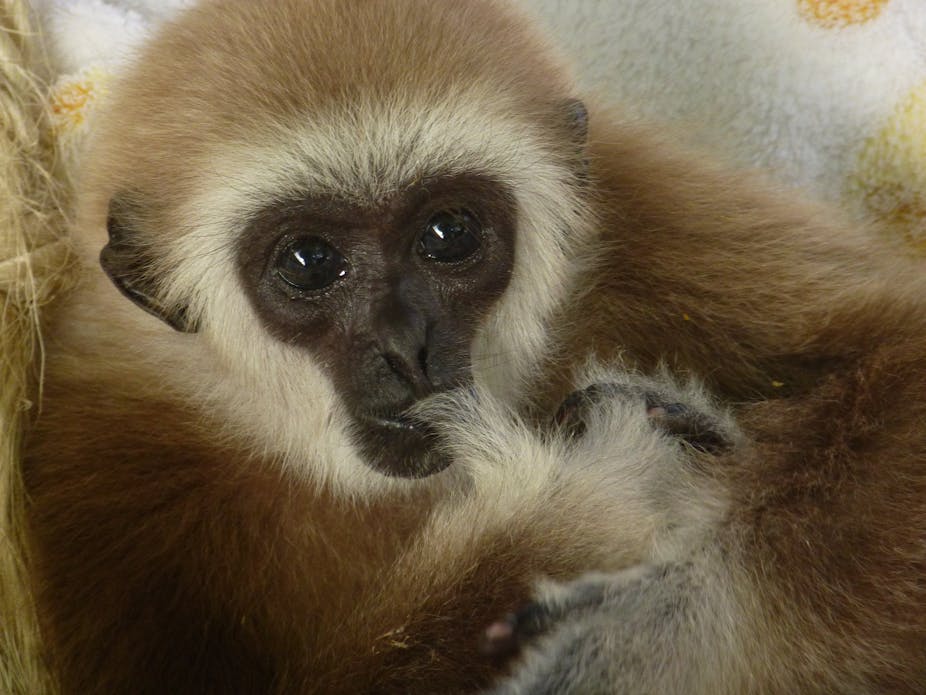These days, many of us have cellphone picture galleries full of selfies, family photos and snaps of our friends. If you’ve ever visited a zoo, animal sanctuary or game reserve, you probably also have photographs of yourself or your kids with various mammals or primates. You may not realise it, but all of those pictures aren’t just happy memories: they’re compelling evidence of evolution in action.
A recent visit to the Lory Park Zoo, a South African animal park, and the resulting photographs offered visual evidence of what I have been researching for years: the muscles that bring your smile to life; your teeth; your nose; even your thumb – each of these features shows how we’ve reached this point through hundreds of millions of years.
Smile, you’re on camera!
Humans can smile because of our muscular cheeks. We developed this feature because we chew our food: cheek muscles hold the food in the mouth cavity during chewing.
Much like the hair you carefully rearrange before a selfie, your cheek muscles and the accompanying smile date back about 250 million years. There were no people then; not even mammals. It was a time before dinosaurs, when earth was ruled by our pre-mammalian ancestors, the therapsids.
They were the first to evolve cheeks, as evidenced by the muscular scars found on their fossils in South Africa’s Karoo region today.
Other non-mammalian animals like crocodiles, tortoises, iguanas and flamingos can’t smile precisely because they don’t have cheeks. They can’t even chew, since without the relevant facial and cheek muscles, the food would just dribble out of their mouths.
If you smile with your mouth open, your teeth will be visible in a selfie or family portrait. All of those teeth are very different from each other, from the pointy canine to your spatulated incisors and those large post canine teeth at the back of the mouth that we call molars.
Those choppers are another legacy of our pre-mammalian ancestors. They evolved an enlarged canine to seduce their mates some 300 million years ago.

Did you nose?
So what else about our evolutionary history is clear in photographs? Well, one element is as obvious as the nose on your face.
Human noses are pretty unique in the animal kingdom: they’re dry. We don’t have the black, moist nose that for example dogs and cats have. Our nose is made of regular, dry skin. The same is true for monkeys, apes and a strange tiny primate with huge eyes called the Tarsier. In fact, humans and the Tarsier have a common ancestor that lived around 50-60 million years ago – a fact that’s proved by our dry noses.
Another evolutionary signpost is the thumb. If you’ve got kids, nieces, nephews or godchildren, you probably have at least one photograph of a small person sucking their thumb. This action is not unique to human babies – all primates have an opposable thumb, and thumb-sucking has likely been usual among baby primates since they first appeared some 70 million years ago.
Next time you set up a family portrait or fuss with your hair before snapping a selfie, just think: you’re about to reveal the story of evolution. It’s literally written all over your face.

